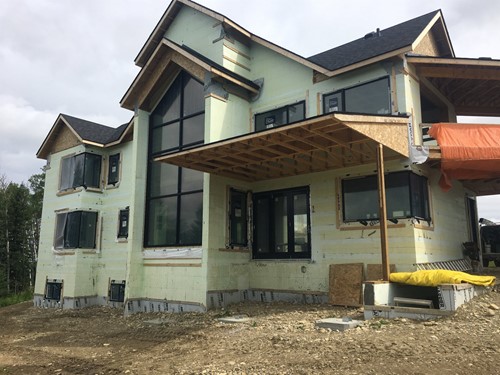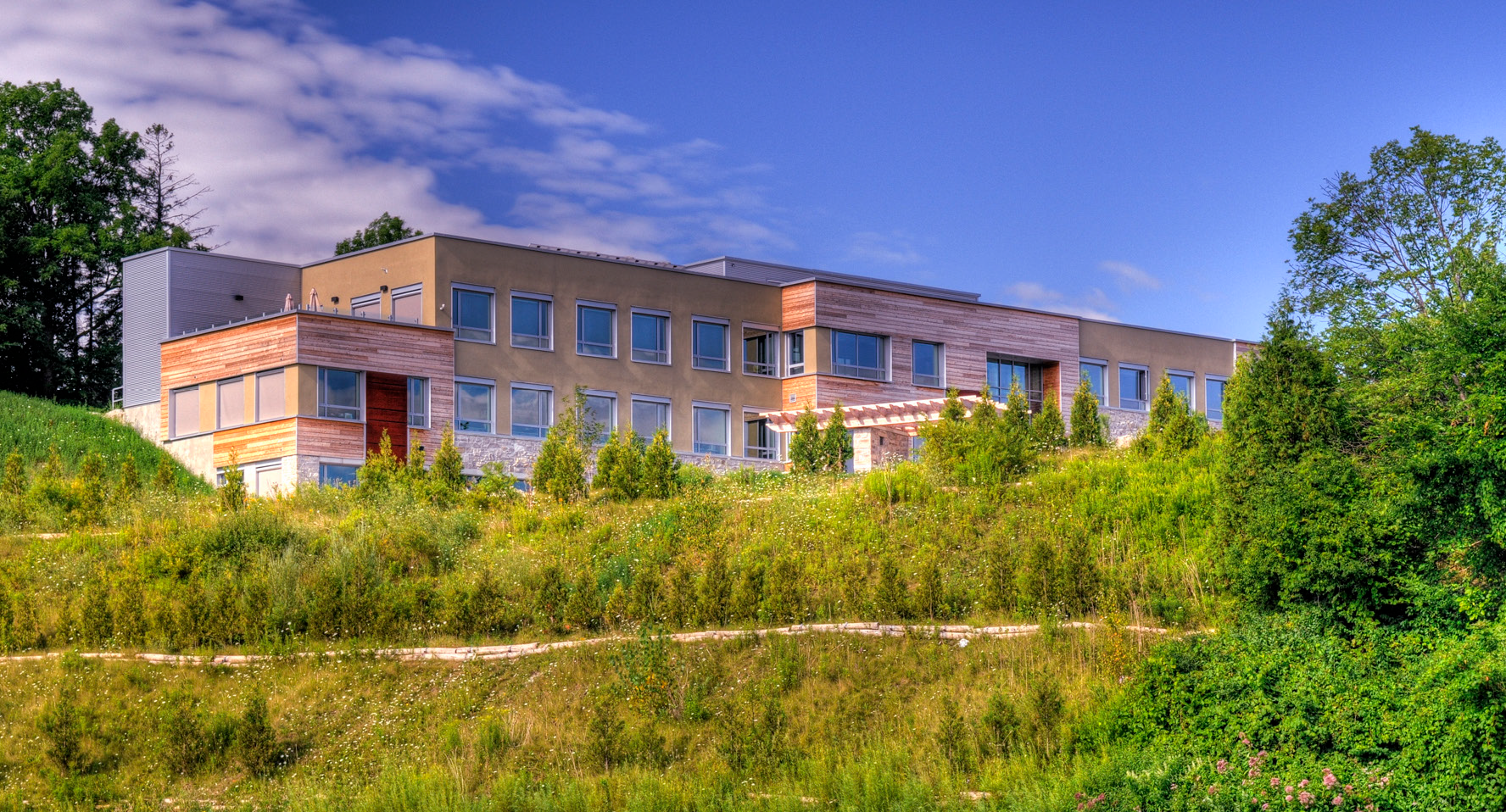
- Products
- Why Nudura
- Nudura Project Applications
- Training Academy
- Resources
- Company
Architects are always looking for more efficient ways to design buildings that achieve their clients’ goals, be it a commercial or residential property. The chosen building materials play an important role in accommodating the structure’s sustainability, functionality, performance, and aesthetic. To streamline this process, insulated concrete forms (ICFs) for exterior wall construction enable architects to flex their creativity with easy-to-execute designs that deliver environmentally responsible, durable buildings- exactly what their clients need.
ICFs benefit everyone involved in a building project. Here’s why architects are using them:
Once mainly thought of for only basements, ICFs are now considered the best choice for all sorts of building types from the foundation to the roof. In fact, ICF blocks from Nudura can be used for single- or multi-story properties, whether they are commercial or residential, part of a development or a unique custom build. Beyond the main structure itself, ICFs easily meet performance needs for more luxury features like swimming pools and safe rooms. They come in a variety of widths and straight, corner and curved pieces that can be combined to meet any design requirements.
ICF walls also offer architects creative flexibility for the exterior cladding, from modern to traditional styles and everything in between. An array of finishes, including stucco, brick, wood and stone, can be applied on ICF block walls for the perfect long-lasting impression.
A Leap Towards Net-Zero Building
The basis of a Nudura ICF build, two layers of expanded polystyrene (EPS) foam provide continuous insulation on both sides of a solid concrete wall. This airtight, thermo-regulating building envelope makes ICF structures extremely energy efficient. In fact, ICF homes consume up to 60 percent less energy for heating and cooling than wood-framed properties, reducing their fossil-fuel use and lowering their carbon footprint.
This energy-efficiency is a major benefit for architects, whose clients are increasingly seeking more sustainable solutions to help the environment and cut their utility costs. For large buildings like schools and hospitals that use ICFs, the operational savings add-up. Warren County Schools in Kentucky is continuing to implement ICF-constructed schools and expect over $800,000 in annual savings.
As net-zero and passive buildings become sought after, the energy efficiency of ICFs helps reach these eco-friendly milestones. Nudura ICFs can accumulate more LEED points, a key metric in green building, than many other insulated concrete form providers. They can even help a project become net positive and produce more energy than it will consume, like the Howland Green Business Centre in Ontario, Canada.
Resilient in the Face of Disaster
Just as client requests for sustainable designs are increasing, there’s also a growing interest in buildings that can stand up to extreme weather events. Whether it’s wildfires, hurricanes or tornadoes, many people are feeling the effects of climate change close to home. But architects can provide peace of mind to their clients and help their property withstand disasters by using ICF block construction.
ICF buildings can hold out longer against environmental stressors than traditional wood-framed structures. Nudura blocks have a four-hour fire-rating compared to wood-framing’s one-hour threshold and can also stay standing in winds of up to 250 mph (400 kph). Even in the face of these high winds and flying debris, an ICF building will maintain its structural integrity and be a safe shelter for occupants. With that kind of durability, both the ICF building and the architect’s legacy will remain intact.
 Better for Your Environment
Better for Your Environment
Beyond energy efficiency and disaster resilience, ICFs can also be a more environmentally friendly building material. Nudura’s unique ICF block design creates less waste during the construction process, and any EPS foam or Durafold webbing that is not needed, can be reused on another project or recycled. The folding nature of Nudura’s ICFs allows them to compress on themselves and be transported without shipping air to save on freight costs and unnecessary shipments.
Once fully installed, ICFs create an airtight building envelope. With reduced thermal bridging and no leaks in the exterior, HVAC systems can do their job more efficiently with even interior temperatures throughout the building. The composition of ICFs also prohibit mold growth, block termites and other pests, and do not emit harmful chemicals like volatile organic compounds or VOCs. These benefits combined with the stable indoor temperatures result in healthier air quality and added comfort for those living or working in the building.
Building Ready
Architects must of course also take into account the feasibility of their designs for the contractor and trades. builders and construction teams. A smooth construction process saves everyone time and money and paves the way for more work down the road.
Nudura’s interlocking forms are lightweight and easy to move and store, making them quicker to install with less labor compared to wood-frame builds. Nudura ICF structures meet and often exceed increasingly strict building codes rules for energy, so the design/build team can rest easy on that front.
For in-depth specifications, Nudura offers a design details library with product attributes to streamline ICF use in any exterior or interior wall.

CONTACT US
We’re committed to supporting homeowners and design professionals who are interested in or use our products. We’re always happy to help and provide more information.





